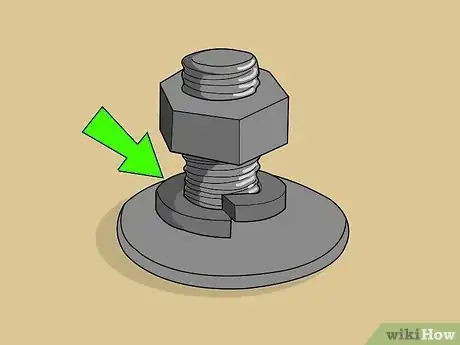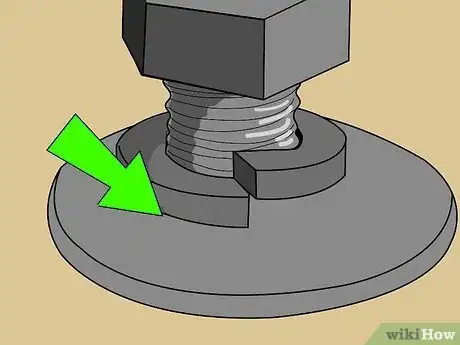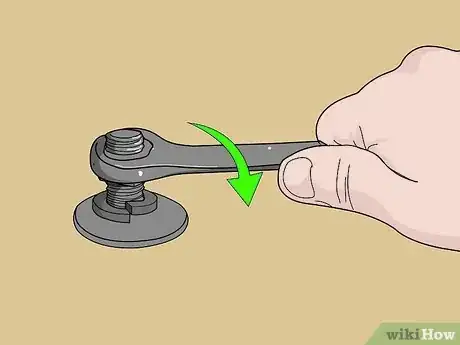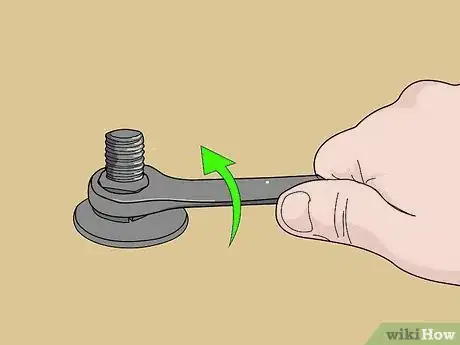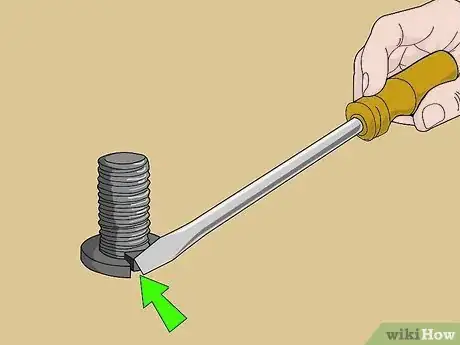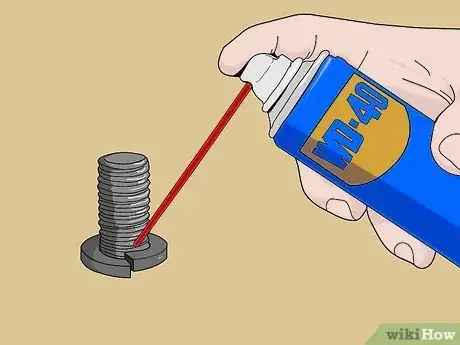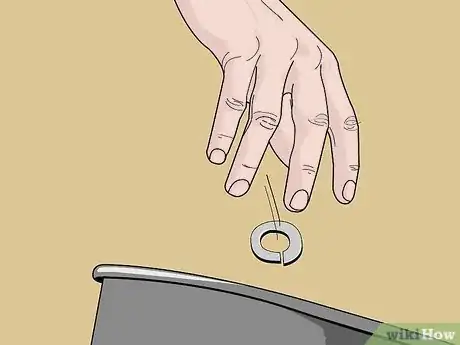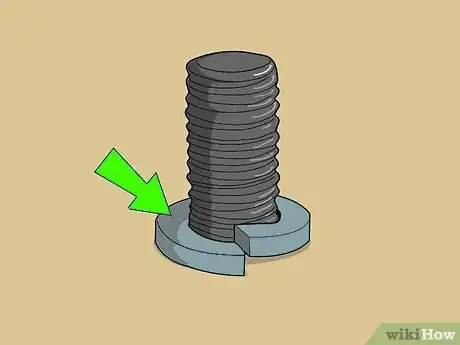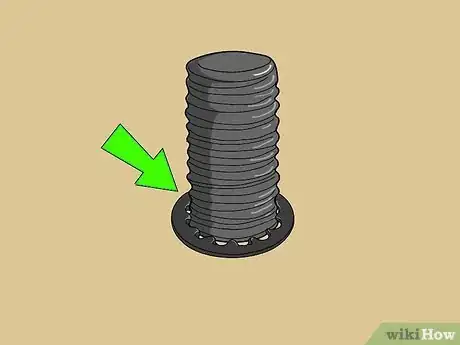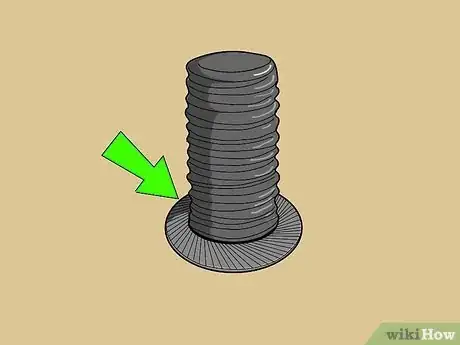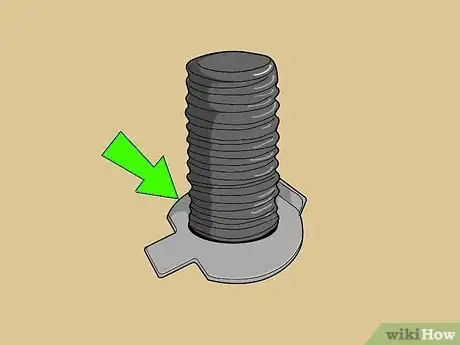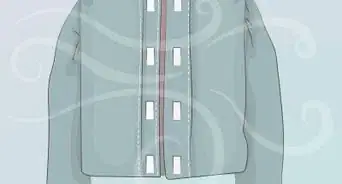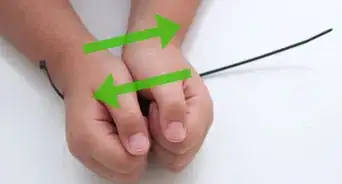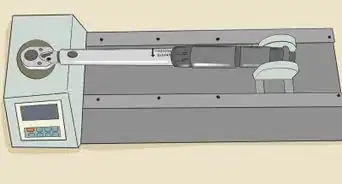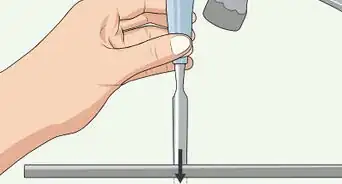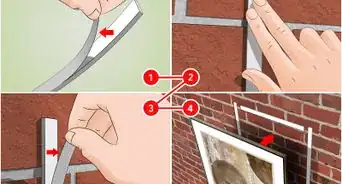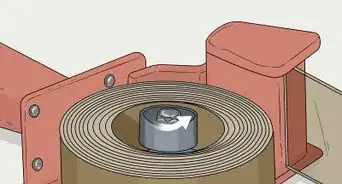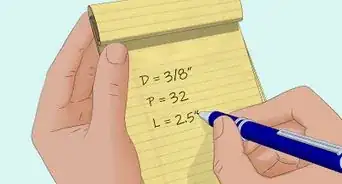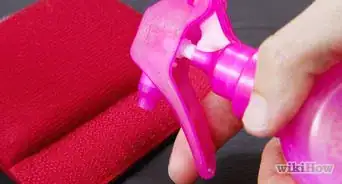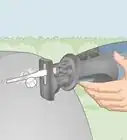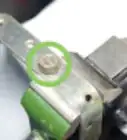This article was co-authored by Barry Zakar. Barry Zakar is a professional handyman and the founder of Little Red Truck Home Services based in the San Francisco Bay Area. With over ten years of experience, Barry specializes in a variety of carpentry projects. He is skilled at constructing decks, railings, fences, gates, and various pieces of furniture. Barry also holds his MBA from John F. Kennedy University.
There are 8 references cited in this article, which can be found at the bottom of the page.
This article has been viewed 265,929 times.
Over time, bolted nuts and other threaded fasteners can loosen up due to friction and joint movement. Lock washers are a type of hardware that, unlike regular washers, can hold those objects in place.[1] When properly applied, lock washers provide a cheap, simple way to keep threaded fasteners steady over a long period of time.
Things You Should Know
- Tighten your threaded fastener over the lock washer, making sure the washer is tight against the fastener and other surface.
- Unscrew the fastener and pry the lock washer off with a flat screwdriver to remove. If needed, lubricate the washer with WD-40.
- Choose a split, tooth, serrated Belleville, or tab washer depending on the type of hold you need.
Steps
Assembling a Lock Washer
-
1Place the lock washer under the threaded fastener. When used correctly, a lock washer will hold the nut or other threaded fastener in place. To help it accomplish this, put the lock washer on first, below the fastener. If your project calls for other washers or hardware elements, they should go on before the lock washer so that it can hold them in place.
-
2Make sure your washer is tight against the fastener and other surface. To operate correctly, your lock washer must press against both the threaded fastener and the other adjacent surface, creating a tight connection. If the connection isn’t tight, press the fastener down until it is. This is particularly important when dealing with lock nuts, which require that that grooves of a toothed washer lock together with the grooves of the nut.Advertisement
-
3Tighten your threaded fastener. For small, general purpose jobs, tighten your nut or threaded fastener by turning a wrench or ratchet clockwise. Do this until the fastener is firm but can be loosened if necessary. For large or specialty jobs, consult your project manual or nut head markings for a specific torque value, then use a torque wrench to tighten your fastener to the specified amount.[2]
-
4Examine your washer to make sure it is operating correctly. Check to see that any teeth on your washer are completely covered by the nut or fastener head. For split washers, make sure that the washer is slightly out of alignment, indicating that it is exerting tension on the threaded fastener. If the washer is not operating correctly, loosen the nut or threaded fastener and fix the washer.[3]
Removing Lock Washers
-
1Remove the nut or threaded fastener holding the washer in place. For most nuts and fasteners, you can attach a simple wrench or vise-grip to the object and turn it counter-clockwise. For stuck nuts and threaded fasteners, you may need to use a stronger tool like a pipe wrench, which you can grip onto the fastener and turn like a regular wrench.[4]
-
2Pry the lock washer off with a flat screwdriver. If you’re removing a split washer, place the screwdriver head beneath the washer or inside the split and push. If you’re removing a washer with teeth, place your screwdriver head under a tooth and push up, repeating with more teeth if necessary. For other washers, place your screwdriver head below the washer and push up.[5]
- Depending on the amount of pressure the washer is under, it may break when removed.
-
3Spray the washer with lubricant if you can’t get it off. If the lock washer won’t budge, spray the area with a penetrating lubricant like WD-40, Royal Purple Max Film, or PB Blaster Penetrating Catalyst. This will loosen up your washer and make it easier to remove.[6] After applying the lubricant, repeat the previous step.[7]
-
4Throw away worn out washers. Some lock washers, like serrated Bellevilles, can withstand multiple uses easily. Other washers, like split locks, wear out after 1 or 2 uses. For safety, do not reuse split lock washers or washers that are damaged. If you’re dealing with high-stress joints, do not use old washers at all.[8]
Picking a Lock Washer
-
1Use a split lock washer for small jobs. A split lock washer, also known as a helical spring washer, is the most common form of lock washer. Instead of using grooves, it operates more like a spring, holding the threaded fastener in place with friction. Use a split lock on a small, low-intensity job, since bigger loads will flatten the washer and make it useless.[9]
-
2Use tooth lock washers for extra force. With their jagged edges, tooth lock washers hold the nut or threaded fastener in place with a significant amount of force. They come in two forms: internal tooth and external tooth. Internal tooth washers work best on small screws or screws used in electrical grounding, while external tooth washers work best on large screws.[10]
- Tooth lock washers work well with aluminum and soft plastic surfaces.
-
3Choose a serrated Belleville washer for extremely tense loads. Serrated Belleville washers are conical pieces of hardware with grooves on the surface. They are used to distribute tension at a joint, and though they won’t provide as much locking force as other lock washers, they can be useful when dealing with extremely large, tense loads.[11]
-
4Pick a tab washer for harsh environments. If your nut or threaded fastener needs to withstand intense climates, go with a tab washer. These pieces of hardware have one or more tabs that, when bent against the nut or fastener head, hold it in place.[12]
Expert Q&A
-
QuestionHow do lock washers work?
 Barry ZakarBarry Zakar is a professional handyman and the founder of Little Red Truck Home Services based in the San Francisco Bay Area. With over ten years of experience, Barry specializes in a variety of carpentry projects. He is skilled at constructing decks, railings, fences, gates, and various pieces of furniture. Barry also holds his MBA from John F. Kennedy University.
Barry ZakarBarry Zakar is a professional handyman and the founder of Little Red Truck Home Services based in the San Francisco Bay Area. With over ten years of experience, Barry specializes in a variety of carpentry projects. He is skilled at constructing decks, railings, fences, gates, and various pieces of furniture. Barry also holds his MBA from John F. Kennedy University.
Handyman Lock washers look like any other washer except that the slit in it is raised slightly higher on one side. Because of this raised side, it's better at keeing tension on the screws.
Lock washers look like any other washer except that the slit in it is raised slightly higher on one side. Because of this raised side, it's better at keeing tension on the screws.
Things You’ll Need
Assembly
- Nut or threaded fastener
- Lock washer
- Wrench or ratchet (for small jobs)
- Torque wrench (for large jobs)
Removal
- Wrench or vise-grip
- Flat screwdriver
- Pipe wrench (for stuck washers)
- Spray lubricant (for stuck washers)
References
- ↑ Barry Zakar. Handyman. Expert Interview. 20 August 2020.
- ↑ http://www.popularmechanics.com/cars/how-to/a6613/torque-wrench-101-how-to-get-the-right-amount-of-force/
- ↑ https://ntrs.nasa.gov/archive/nasa/casi.ntrs.nasa.gov/19900009424.pdf
- ↑ https://www.familyhandyman.com/automotive/how-to-loosen-stuck-bolts/view-all/
- ↑ https://www.youtube.com/watch?v=mGohIeG8PJ8&feature=youtu.be&t=15s
- ↑ Barry Zakar. Handyman. Expert Interview. 20 August 2020.
- ↑ http://dsportmag.com/the-tech/education/the-art-of-removing-stuck-nuts-and-bolts/
- ↑ http://www.ecmweb.com/content/belleville-blues
- ↑ https://ntrs.nasa.gov/archive/nasa/casi.ntrs.nasa.gov/19900009424.pdf
About This Article
To use a lock washer, start by placing the washer under the nut or threaded fastener. Check that the washer is tight against both surfaces and, if the threaded fastener and washer both have grooves, that they’re locked together. Then, tighten your threaded fastener with a wrench or ratchet until it is firm but can be loosened and removed if necessary. When finished, check that your washer’s teeth are fully covered or, if you’re using a split lock washer, that the threaded fastener is slightly out of alignment. For tips on removing and choosing a lock washer, read on!

